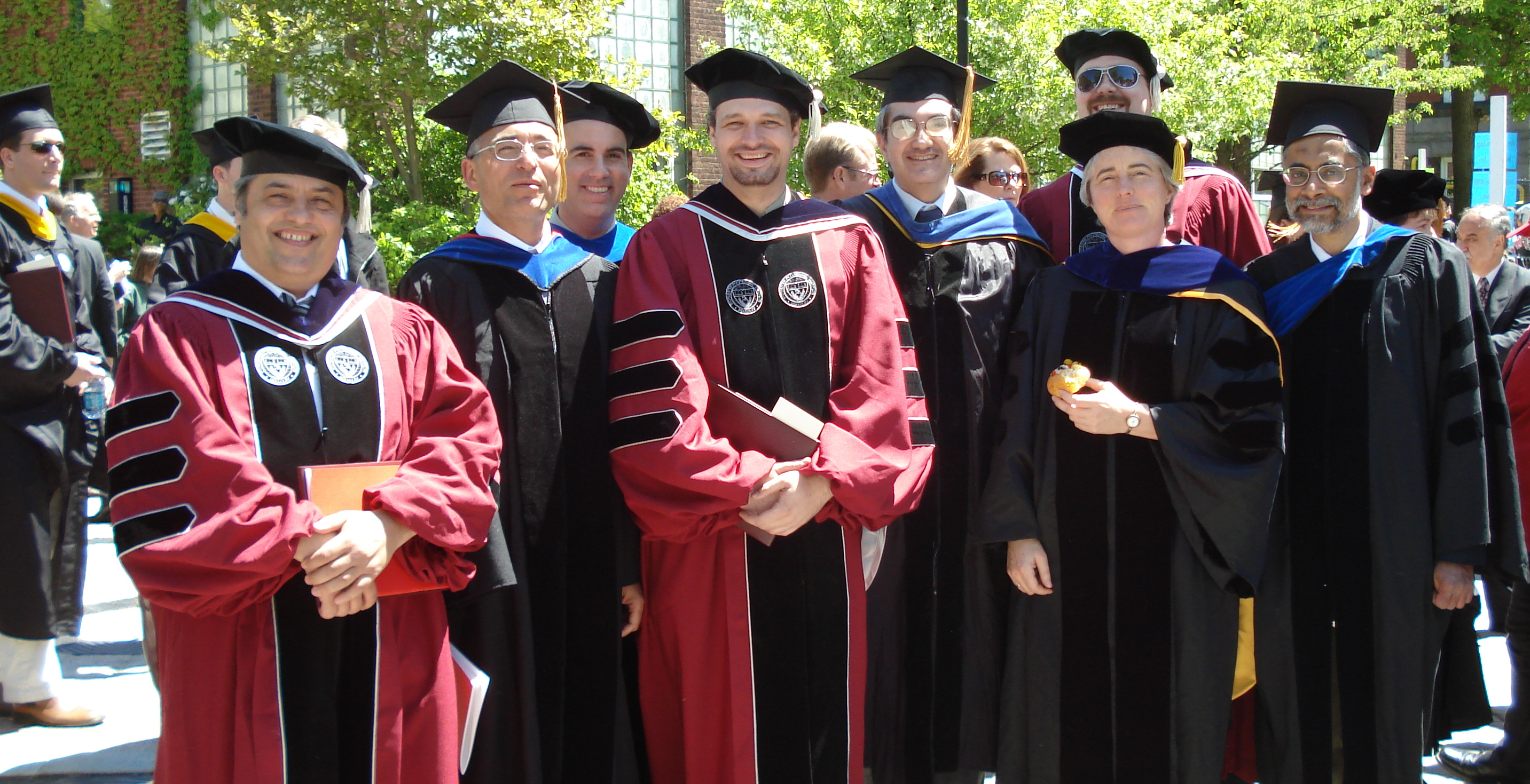|
Willis Jackson, Baron Jackson Of Burnley
Willis Jackson, Baron Jackson of Burnley FRS (29 October 1904 – 17 February 1970) was a British technologist and electrical engineer. Background and education Born in Burnley, he was the only son of Herbert Jackson and his wife Annie Hiley. Jackson was educated at Rosegrove Primary School and the Burnley Grammar School until 1922 and read electrical engineering at the University of Manchester until 1925. He obtained a Bachelor of Science first class, having previously won three different scholarships. Jackson studied then under Robert Beattie, graduating with a Master of Science in 1926. Jackson was awarded a number of honorary degrees. Doctor of Science degrees were awarded by the Swiss Federal Institute of Technology Zurich, by the University of Bristol and by City University London. He was made an honorary Doctor of Engineering by the University of Sheffield and received a Doctor of Laws from the University of Aberdeen as well as from the University of Leeds in 1967. ... [...More Info...] [...Related Items...] OR: [Wikipedia] [Google] [Baidu] |
The Right Honourable
''The Right Honourable'' (abbreviation: ''Rt Hon.'' or variations) is an honorific Style (form of address), style traditionally applied to certain persons and collective bodies in the United Kingdom, the former British Empire and the Commonwealth of Nations. The term is predominantly used today as a style associated with the holding of certain senior public offices in the United Kingdom, Canada, New Zealand, and to a lesser extent, Australia. ''Right'' in this context is an adverb meaning 'very' or 'fully'. Grammatically, ''The Right Honourable'' is an adjectival phrase which gives information about a person. As such, it is not considered correct to apply it in direct address, nor to use it on its own as a title in place of a name; but rather it is used in the Grammatical person, third person along with a name or noun to be modified. ''Right'' may be abbreviated to ''Rt'', and ''Honourable'' to ''Hon.'', or both. ''The'' is sometimes dropped in written abbreviated form, but is al ... [...More Info...] [...Related Items...] OR: [Wikipedia] [Google] [Baidu] |
University Of Sheffield
The University of Sheffield (informally Sheffield University or TUOS) is a public university, public research university in Sheffield, South Yorkshire, England. Its history traces back to the foundation of Sheffield Medical School in 1828, Firth College in 1879 and Sheffield Technical School in 1884. University College of Sheffield was subsequently formed by the amalgamation of the three institutions in 1897 and was granted a royal charter as University of Sheffield in 1905 by King Edward VII. Sheffield is formed from 50 academic departments which are organised into five faculties and an international faculty. The annual income of the institution for 2020–21 was £741 million, of which £163 million was from research grants and contracts, with an expenditure of £708.6 million. Sheffield ranks among the top 10 of UK universities for research grant funding, and it has become number one in the UK for income and investment in engineering research according to new data published by t ... [...More Info...] [...Related Items...] OR: [Wikipedia] [Google] [Baidu] |
Electrotechnics
Electrical engineering is an engineering discipline concerned with the study, design, and application of equipment, devices, and systems which use electricity, electronics, and electromagnetism. It emerged as an identifiable occupation in the latter half of the 19th century after commercialization of the electric telegraph, the telephone, and electrical power generation, distribution, and use. Electrical engineering is now divided into a wide range of different fields, including computer engineering, systems engineering, power engineering, telecommunications, radio-frequency engineering, signal processing, instrumentation, photovoltaic cells, electronics, and optics and photonics. Many of these disciplines overlap with other engineering branches, spanning a huge number of specializations including hardware engineering, power electronics, electromagnetics and waves, microwave engineering, nanotechnology, electrochemistry, renewable energies, mechatronics/control, and electrical m ... [...More Info...] [...Related Items...] OR: [Wikipedia] [Google] [Baidu] |
Doctor Of Philosophy
A Doctor of Philosophy (PhD, Ph.D., or DPhil; Latin: or ') is the most common degree at the highest academic level awarded following a course of study. PhDs are awarded for programs across the whole breadth of academic fields. Because it is an earned research degree, those studying for a PhD are required to produce original research that expands the boundaries of knowledge, normally in the form of a dissertation, and defend their work before a panel of other experts in the field. The completion of a PhD is often a requirement for employment as a university professor, researcher, or scientist in many fields. Individuals who have earned a Doctor of Philosophy degree may, in many jurisdictions, use the title '' Doctor'' (often abbreviated "Dr" or "Dr.") with their name, although the proper etiquette associated with this usage may also be subject to the professional ethics of their own scholarly field, culture, or society. Those who teach at universities or work in academic, e ... [...More Info...] [...Related Items...] OR: [Wikipedia] [Google] [Baidu] |
The Queen's College, Oxford
The Queen's College is a constituent college of the University of Oxford, England. The college was founded in 1341 by Robert de Eglesfield in honour of Philippa of Hainault. It is distinguished by its predominantly neoclassical architecture, which includes buildings designed by Sir Christopher Wren and Nicholas Hawksmoor. In 2018, the college had an endowment of £291 million, making it the fourth-wealthiest college (after Christ Church, St. John's, and All Souls). History The college was founded in 1341 as "Hall of the Queen's scholars of Oxford" by Robert de Eglesfield (d'Eglesfield), chaplain to the Queen, Philippa of Hainault, after whom the hall was named. Robert's aim was to provide clergymen for his native Cumberland and where he lived in Westmorland (both part of modern Cumbria). In addition, the college was to provide charity for the poor. The college's coat of arms is that of the founder; it differs slightly from his family's coat of arms, which did not incl ... [...More Info...] [...Related Items...] OR: [Wikipedia] [Google] [Baidu] |
Metropolitan-Vickers
Metropolitan-Vickers, Metrovick, or Metrovicks, was a British heavy electrical engineering company of the early-to-mid 20th century formerly known as British Westinghouse. Highly diversified, it was particularly well known for its industrial electrical equipment such as Electrical generator, generators, steam turbines, switchgear, transformers, electronics and railway traction equipment. Metrovick holds a place in history as the builders of the first commercial transistor computer, the Metrovick 950, and the first British axial-flow jet engine, the Metropolitan-Vickers F.2. Its factory in Trafford Park, Manchester, was for most of the 20th century one of the biggest and most important heavy engineering facilities in Britain and the world. History Metrovick started as a way to separate the existing British Westinghouse, British Westinghouse Electrical and Manufacturing Company factories from United States control, which had proven to be a hindrance to gaining government cont ... [...More Info...] [...Related Items...] OR: [Wikipedia] [Google] [Baidu] |
Bradford Technical College
The University of Bradford is a public research university located in the city of Bradford, West Yorkshire, England. A plate glass university, it received its royal charter in 1966, making it the 40th university to be created in Britain, but can trace its origins back to the establishment of the industrial West Yorkshire town's Mechanics Institute in 1832. The student population includes undergraduate and postgraduate students. Mature students make up around a third of the undergraduate community. A total of 22% of students are foreign and come from over 110 countries. There were 14,406 applications to the university through UCAS in 2010, of which 3,421 were accepted. It was the first British university to establish a Department of Peace Studies in 1973, which is currently the world's largest university centre for the study of peace and conflict. History The university's origins date back to ''the Mechanics Institute'', founded in 1832, formed in response to the n ... [...More Info...] [...Related Items...] OR: [Wikipedia] [Google] [Baidu] |
Bernard Price Memorial Lecture
The Bernard Price Memorial Lecture is the premier annual lecture of the South African Institute of Electrical Engineers. It is of general scientific or engineering interest and is given by an invited guest, often from overseas, at several of the major centres on South Africa. The main lecture and accompanying dinner are usually held at the University of Witwatersrand and it is also presented in the space of one week at other centres, typically Cape Town, Durban, East London and Port Elizabeth. The Lecture is named in memory of the eminent electrical engineer Bernard Price. The first Lecture was held in 1951 and it has occurred as an annual event ever since. Lecturers :1951 Basil Schonland :1952 A M Jacobs :1953 H J Van Eck :1954 J M Meek :1955 Frank Nabarro :1956 A L Hales :1957 P G Game :1958 Colin Cherry :1959 Thomas Allibone :1960 M G Say :1961 Willis Jackson :1963 W R Stevens :1964 William Pickering :1965 G H Rawcliffe :1966 Harold Bishop :1967 Eric Eastwood :1968 F J Lan ... [...More Info...] [...Related Items...] OR: [Wikipedia] [Google] [Baidu] |
Royal College Of Art
The Royal College of Art (RCA) is a public research university in London, United Kingdom, with campuses in South Kensington, Battersea and White City. It is the only entirely postgraduate art and design university in the United Kingdom. It offers postgraduate degrees in art and design to students from over 60 countries. History The RCA was founded in Somerset House in 1837 as the Government School of Design or Metropolitan School of Design. Richard Burchett became head of the school in 1852. In 1853 it was expanded and moved to Marlborough House, and then, in 1853 or 1857, to South Kensington, on the same site as the South Kensington Museum. It was renamed the Normal Training School of Art in 1857 and the National Art Training School in 1863. During the later 19th century it was primarily a teacher training college; pupils during this period included George Clausen, Christopher Dresser, Luke Fildes, Kate Greenaway and Gertrude Jekyll. In September 1896 the school re ... [...More Info...] [...Related Items...] OR: [Wikipedia] [Google] [Baidu] |
University Of Dundee
, mottoeng = "My soul doth magnify the Lord" , established = 1967 – gained independent university status by Royal Charter1897 – Constituent college of the University of St Andrews1881 – University College , type = Public university , endowment = £35.0 million , budget = £275.7 million , rector = Keith Harris , chancellor = Dame Jocelyn Bell Burnell , principal = Iain Gillespie , faculty = 1,410 , administrative_staff = 1,805 , students = () , undergrad = () , postgrad = () , city = Dundee , state = , country = Scotland, UK , campus = , colours = , nickname = , mascot = , affiliations = ACU DSC SICSAUniversities UK , web ... [...More Info...] [...Related Items...] OR: [Wikipedia] [Google] [Baidu] |
Institution Of Electrical Engineers
The Institution of Electrical Engineers (IEE) was a British professional organisation of electronics, electrical, manufacturing, and Information Technology professionals, especially electrical engineers. It began in 1871 as the Society of Telegraph Engineers. In 2006, it changed its name to the Institution of Engineering and Technology (IET). Notable past presidents have included Lord Kelvin (1889), Sir Joseph Swan (1898) and Sebastian de Ferranti (1910–11). Notable chairmen include John M. M. Munro (1910–11). History The IEE was founded in 1871 as the Society of Telegraph Engineers, changed its name in 1880 to the Society of Telegraph Engineers and Electricians and changed to the Institution of Electrical Engineers in 1888. It was Incorporated by a Royal Charter in 1921. In 1988 the Institution of Electrical Engineers (IEE) merged with the Institution of Electronic and Radio Engineers (IERE), originally the British Institution of Radio Engineers (Brit IRE) foun ... [...More Info...] [...Related Items...] OR: [Wikipedia] [Google] [Baidu] |
City And Guilds Of London Institute
The City and Guilds of London Institute is an educational organisation in the United Kingdom. Founded on 11 November 1878 by the City of London and 16 livery companies – to develop a national system of technical education, the institute has been operating under royal charter (RC117), granted by Queen Victoria, since 1900. The Prince of Wales, later King Edward VII, was appointed the first president of the institute. The City and Guilds of London Institute is also a registered charity (no. 312832) and is the awarding body for City & Guilds and ILM qualifications, offering many accredited qualifications mapped onto the Regulated Qualifications Framework (RQF). The institute's president is the Princess Royal who accepted this role in June 2011 (following her father the Duke of Edinburgh, who held the position for nearly 60 years), and the Chairman of Council is Sir John Armitt, who took office in November 2012. The City & Guilds Group is the market facing brand for the organis ... [...More Info...] [...Related Items...] OR: [Wikipedia] [Google] [Baidu] |
_(cropped).jpg)







